Originally published January 26, 2010 by CityArts
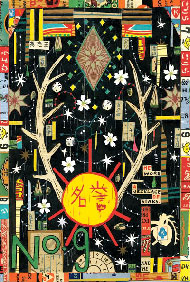 I have long been a fan of Tony Fitzpatrick’s eccentric and obsessive etchings. In the past he has turned his attention and finely-tuned hand to obsess on birds, bugs, hobo alphabets and the poetry of cities. In recent years he has moved increasingly into a new visual and conceptual universe, using collage to channel his obsessions into the visible world.
I have long been a fan of Tony Fitzpatrick’s eccentric and obsessive etchings. In the past he has turned his attention and finely-tuned hand to obsess on birds, bugs, hobo alphabets and the poetry of cities. In recent years he has moved increasingly into a new visual and conceptual universe, using collage to channel his obsessions into the visible world.
Fitzpatrick’s most recent show, at Pierogi Gallery in Williamsburg, is an interesting musing on the life of Crazy Horse. A cacophony of collaged images, many of which seem more autobiographical than biographical, crowd into the small drawings. The largest is roughly 10-by-7 inches, yet all are bursting with narrative, color and image. They are remarkable, the combination of size and density of color and image drawing the viewer into Fitzpatrick’s universe. The use of collaged materials has changed the artist’s palette. Though the work is both beautiful and seductive, I have to confess a longing for a greater presence of his “hand.” One of the best things about Fitzpatrick’s earlier prints were his extraordinary bold, funny and desperate hand-drawn lines.
Fitzpatrick is an artist who never sits still, and though I did not swoon over this body of work as I have in the past, the collages are thoughtful, worthy and wonderfully nuts. It is very telling that in the press release for this show Fitzpatrick readily acknowledges little knowledge of American Indian history or life and proclaims little kinship with the subject. But what fascinates the artist about Crazy Horse reveals much about Fitzpatrick; it is Crazy Horse’s unease in the world. Fitzpatrick describes him as a “seeker,” a man of both courage and “otherworldliness,” both an American iconoclast and an enigma. A portrait of the artist as a young Indian?
Through Feb. 7. Pierogi, 177 N. 9th St. (betw. Bedford & Driggs Aves.), Brooklyn, 718-599-2144.
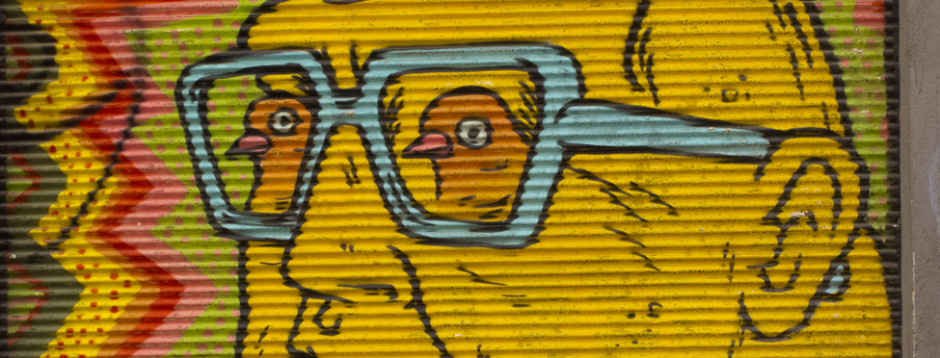

 Carroll Dunham is a naughty boy. His current exhibition, at the Barbara Gladstone Gallery, is a meditation, shall we say, on two female orifices. This is a disappointing exhibition from a gifted artist of whom I have been a huge fan. In the past, Dunham’s drawings and paintings of our chaotic universe—angry men, guns, organs and cities—have embodied, along with their anger, a hysterical sense of humor. Dark and funny, he portrayed a cartoon world that also dove into the modern psyche.
Carroll Dunham is a naughty boy. His current exhibition, at the Barbara Gladstone Gallery, is a meditation, shall we say, on two female orifices. This is a disappointing exhibition from a gifted artist of whom I have been a huge fan. In the past, Dunham’s drawings and paintings of our chaotic universe—angry men, guns, organs and cities—have embodied, along with their anger, a hysterical sense of humor. Dark and funny, he portrayed a cartoon world that also dove into the modern psyche.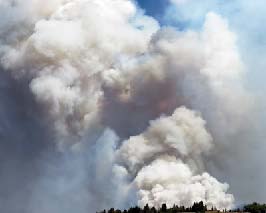 Kris Graves Projects, a Dumbo gallery, has just opened “Of Land,” a fresh and visionary exhibition show of landscape photography. This elegantly curated show consists of 11 photographers whose diverse visions cover a wide of landscape and printing techniques. The photos range from the lush velvet of vintage platinum prints to the harsh colors of an “archival pigment print” and everything in between. The diversity of printing technique is fitting for a show that also ranges so far and wide in its portrayal of landscape.
Kris Graves Projects, a Dumbo gallery, has just opened “Of Land,” a fresh and visionary exhibition show of landscape photography. This elegantly curated show consists of 11 photographers whose diverse visions cover a wide of landscape and printing techniques. The photos range from the lush velvet of vintage platinum prints to the harsh colors of an “archival pigment print” and everything in between. The diversity of printing technique is fitting for a show that also ranges so far and wide in its portrayal of landscape.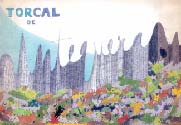 Something In The Water A fantastical gallery opens on a ho-hum NYU block
Something In The Water A fantastical gallery opens on a ho-hum NYU block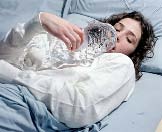 Summer in New York is long, slow, hot and brutal—especially for art galleries. Many of the people who might actually buy something are out of town, and the traditional tourist is not known as a big art consumer. Few artists or galleries want to commit the time and money to a one-person show. Hence the rise of the phenomenon known as the “summer group show.” Galleries come up with overarching themes that give them good excuse to mount large group shows that often have a little of something for everyone. They’re lots of fun, but rarely earth shattering.
Summer in New York is long, slow, hot and brutal—especially for art galleries. Many of the people who might actually buy something are out of town, and the traditional tourist is not known as a big art consumer. Few artists or galleries want to commit the time and money to a one-person show. Hence the rise of the phenomenon known as the “summer group show.” Galleries come up with overarching themes that give them good excuse to mount large group shows that often have a little of something for everyone. They’re lots of fun, but rarely earth shattering. LET’S GET THE obvious question out of the way: A “snatch block” is the part of a crane that the hook is attached to. Given that the co-owners and curators of Snatch Block Projects are hard-core steel welders, this seemed like a natural name for their new art venue. Not commercial, not even alternative, it is “a place and a chance to do whatever we want,” curator John Clement explains. And so they have. You get off the L train, far beyond Bedford Avenue and you walk and walk and then walk some more. You pass a couple of chop shops, a tortilla factory (buy a bag fresh off the grill from the loading dock!), over the English Kills Canal, past the local strip club and you reach a Victorian firehouse.
LET’S GET THE obvious question out of the way: A “snatch block” is the part of a crane that the hook is attached to. Given that the co-owners and curators of Snatch Block Projects are hard-core steel welders, this seemed like a natural name for their new art venue. Not commercial, not even alternative, it is “a place and a chance to do whatever we want,” curator John Clement explains. And so they have. You get off the L train, far beyond Bedford Avenue and you walk and walk and then walk some more. You pass a couple of chop shops, a tortilla factory (buy a bag fresh off the grill from the loading dock!), over the English Kills Canal, past the local strip club and you reach a Victorian firehouse.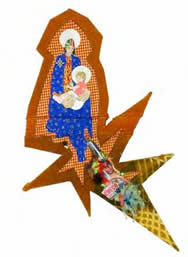 In the No, a thought-provoking exhibition at Edlin Gallery, challenges some of our basic assumptions about outsider artists. The mythology is that outsider artists exist in a state of “not knowing.” They live in a kind of innocent ignorance about the mainstream art scene and often about the world at large. The question becomes how much does our fascination with the artist’s own back-story affect our response to the work.
In the No, a thought-provoking exhibition at Edlin Gallery, challenges some of our basic assumptions about outsider artists. The mythology is that outsider artists exist in a state of “not knowing.” They live in a kind of innocent ignorance about the mainstream art scene and often about the world at large. The question becomes how much does our fascination with the artist’s own back-story affect our response to the work. The work of Penny Rockwell, currently showing at Pavel Zoubock Gallery, is harrowing, intimate, sad and beautiful. She has documented with painful honesty the progression of a psychotic break that she suffered in the early 1990s, one fueled by paranoid delusions that electrical plugs were evil animated beings that were after her. After 10 years of therapy—and medication—she has attempted to recreate and communicate the absolute terror of this experience.
The work of Penny Rockwell, currently showing at Pavel Zoubock Gallery, is harrowing, intimate, sad and beautiful. She has documented with painful honesty the progression of a psychotic break that she suffered in the early 1990s, one fueled by paranoid delusions that electrical plugs were evil animated beings that were after her. After 10 years of therapy—and medication—she has attempted to recreate and communicate the absolute terror of this experience.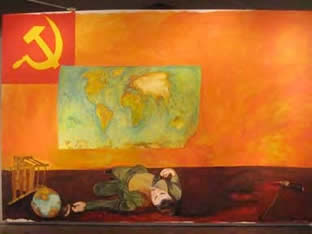 The current exhibition at Hebrew Union College Gallery seems particularly apt for 2008. Envisioning Maps is a giddy investigation of maps and more interestingly, the underlying concept of “mapping;” getting lost, getting found and staking out a place to belong in the world. Whether it’s a historical scarf mapping the invasion of Normandy or Paula Sher’s staggering, insanely wordy map of Israel and its neighbors, the desire to know where one is resonates loudly in a world where we don’t seem to know where we are going.
The current exhibition at Hebrew Union College Gallery seems particularly apt for 2008. Envisioning Maps is a giddy investigation of maps and more interestingly, the underlying concept of “mapping;” getting lost, getting found and staking out a place to belong in the world. Whether it’s a historical scarf mapping the invasion of Normandy or Paula Sher’s staggering, insanely wordy map of Israel and its neighbors, the desire to know where one is resonates loudly in a world where we don’t seem to know where we are going.